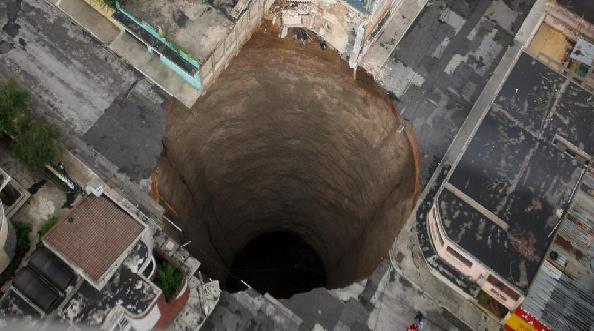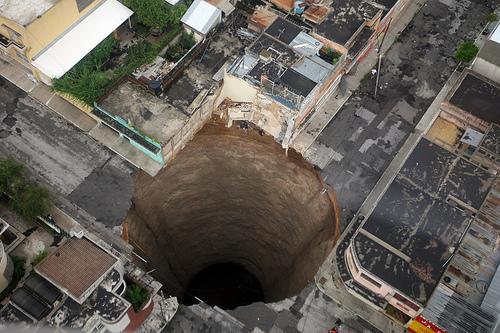
The term sinkhole conjures up images of the Earth opening up and swallowing an entire house. As impressive and downright scary as this is, such events are rare and might not even be actual sinkholes, for the term has different meanings for geologists, insurance law and the general public.
Sewer line and water main breaks have been known to carry away the soil below a street and cause a sudden collapse of a roadway or a building’s foundation.
Although the media and the general public will call it a “sinkhole,” for geologists it’s an erosion event, according to Bricky Way, senior professional geologist at Geohazards, Inc., a geotechnical consulting firm specializing in sinkhole investigations.
For geologists a sinkhole forms when rain and groundwater erode limestone and similar rocks below ground, creating caves.
When the ceiling of a cave weakens to the point where it can no longer support the earth above it, the structure collapses and a depression forms on the surface, either slowly over time or sometimes all at once.
“You may have a house that’s affected by a subsidence sort of sinkhole event that will just slowly crack as it slowly settles and that’s fairly common, that doesn’t make the news as much,” Way says. “It’s very rare that something is going to happen that’s going to cause your house to fall into the ground, it’s more likely just going to be a bunch of annoying little cracks and a bunch of settling.”
These processes happen slowly below ground, but on the surface they can seem to appear out of nowhere as a depression forms in the yard or a home shows signs of stress.
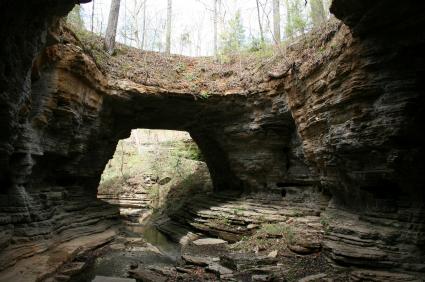 Changes in the water table can often cause more sinkholes to suddenly appear.
Changes in the water table can often cause more sinkholes to suddenly appear.
During a drought, a lack of rain and increased pumping from underground aquifers means the water table falls, thereby reducing support for subterranean structures.
When heavy rains fall it causes more erosion below ground while adding weight to the saturated soil above.
Way says homeowners in sinkhole-prone areas should be on the alert for any changes in the structure of their house or yard. Although a major collapse typically comes without warning, there are signs that could indicate the existence of a slower-forming subsidence sinkhole—such as a depression forming on the surface.
“In low areas in your yard if you see an area that you’re pretty sure was not lower before and suddenly you notice maybe it’s subsided a few inches that’s definitely something to watch out for,” Way says.
Of course, cracks and depressions can happen anywhere as a result of normal settling that has nothing to do with a sinkhole, such as a house with insufficient support or a poorly-built foundation. Clay soil that shrinks and swells with changes in the weather can also be a problem in Florida, as it can damage a foundation.
Way says ground penetrating radar, electrical resistivity and drilling can be used to see what’s below the surface and whether a sinkhole is at fault.
When a sinkhole is detected, concrete grout is often pumped below the surface to fill the void. Pinning can also be used, whereby large pins are driven underneath a home to secure it to the limestone below ground.
Sinkhole alley
The cost of sinkhole remediation is where sinkhole insurance comes into play, although changes made to Florida’s insurance laws in 2011 are casting doubt on that. The laws designating what’s covered by sinkhole insurance have become much tighter than before.
Florida is the sinkhole capital of the U.S., particularly what’s known as “sinkhole alley” in the west central portion of the state, in the counties surrounding Tampa and St. Petersburg. The state is underlain by shallow limestone below ground, with warmer weather and plenty of rain above to dissolve it.
In the early 2000s, Florida saw an increase in lawsuits over sinkhole claims that threatened the viability of its state-run underwriter, according to Perry Ian Cone, a lawyer with Gray Robinson, P.A., former inside general counsel at Florida’s Citizens Property Insurance Corp. and former general counsel at Travelers of Florida.
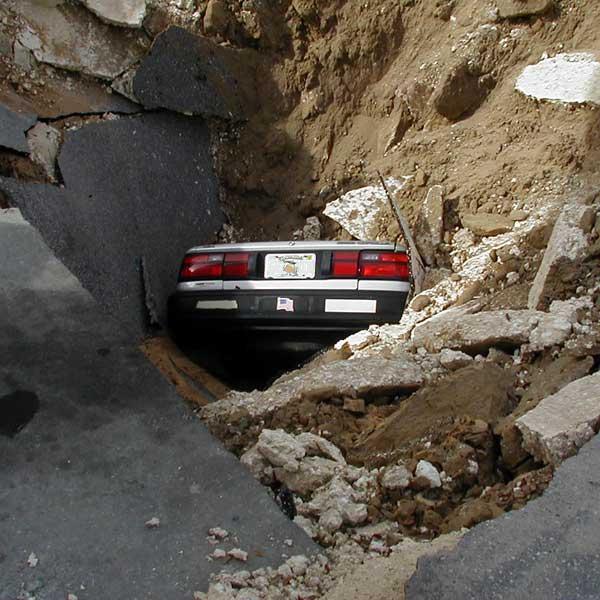 Cone says property owners and their lawyers would claim that things like cracking sidewalks were evidence of a sinkhole and file a claim.
Cone says property owners and their lawyers would claim that things like cracking sidewalks were evidence of a sinkhole and file a claim.
Insurance companies often just paid on these claims to avoid litigation costs. He says part of the problem was the law put the burden of proof on the insurance company to prove the issue wasn’t caused by a sinkhole.
“If you have a sinkhole you’re going to get inches, maybe feet of movement in your house, but if you just have normal everyday shifting of the ground, which happens, you get little sidewalk cracks that are due to any number of factors,” Cone says. “That’s just not what the policy covered but what was happening is that claims were being filed on just cracks.”
Cone says state-run Citizens collected $207 million in sinkhole premiums from 2007 to 2011 but paid $1.173 billion in claims—an unsustainable path. As a result, the state tightened its laws on sinkhole coverage and Citizens has become the only insurer available in active sinkhole areas.
“The intent of it is to make it frankly more difficult to prove a sinkhole claim because it was too easy beforehand. If you’re a sinkhole claimant, it’s not friendly,” Cone says. “People talk about things being pro-consumer and anti-consumer but remember there’s two sides of being an insurance consumer—the premium and the claim. The claim side was very friendly beforehand but the premium side has been unfriendly.”
Sinkhole vs. catastrophic coverage
The changes affect sinkhole policies renewed or sold after July, 2012. The biggest change is separating coverage into two types of policies: catastrophic ground collapse and basic sinkhole coverage.
Every Florida homeowner who insures their property automatically receives catastrophic coverage, which basically applies to a home that’s been destroyed by a sinkhole.
Four criteria must be met for home to qualify for a catastrophic claim: the abrupt collapse of the ground cover; a depression in the ground clearly visible to the naked eye; structural damage to the building and its foundation; and the building must be condemned and ordered vacated by a government agency.
Non-catastrophic sinkhole insurance applies to homes that are damaged by a sinkhole but still repairable. These policies are optional, but could be required by a mortgage lender. They also cover only the main dwelling itself—not decks, garages or the like.
To qualify for such a claim damage to the home must meet a series of criteria that involves the floor, support structures and exterior walls being at risk of failure, as defined by state building codes, with the determination made by an engineer. The damage must have been caused by a sinkhole and confirmed by a geologist.
K.C. Williams III, a managing partner at Williams Law Association, says the Florida legislature went too far in changing the law. He notes that catastrophic coverage only applies to homes that are condemned whereas regular sinkhole insurance won’t actually cover a claim without specific damages to the home.
“If you don’t have structural damage as defined in this law you have no claim, even if there’s a sinkhole there,” Williams says. “You can still buy (sinkhole coverage) for thousands and thousands of dollars but it may not be getting you any coverage. You may be buying air.”
Robin Wescott, Florida’s insurance consumer advocate, says contractors, adjusters and lawyers became highly aggressive in pursuing sinkhole claims in the past, which brought this response from the insurance industry.
“The worst part of this is that there were consumers in this that are the ones that were caught in the middle,” Westcott says. “They have a valid claim but because the companies had reacted in a certain way to limit their exposure by making verification of the claim more difficult, you had people who once you make a system complicated or a recovery complicated then they have to jump through those hoops.”
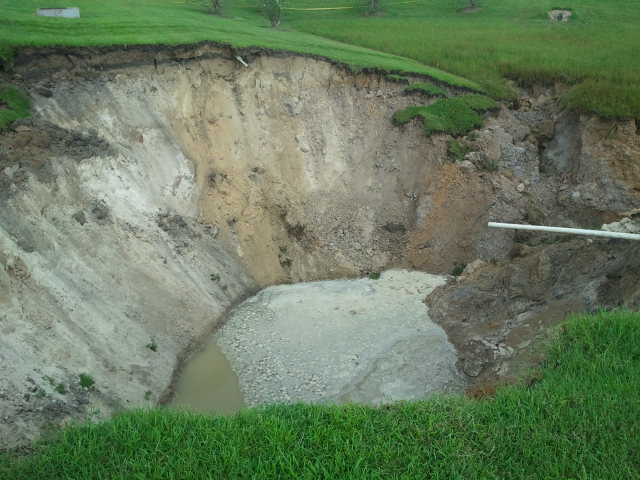 Another significant change is those who are paid on a non-catastrophic sinkhole claim must have their home repaired and the insurance company pays the contractor directly.
Another significant change is those who are paid on a non-catastrophic sinkhole claim must have their home repaired and the insurance company pays the contractor directly.
In the past many homeowners would simply use the money to pay off the mortgage and not have the work done.
Jumping through hoops
Although it’s expected these changes will make it harder for homeowners to get paid on a sinkhole claim, it will take time for attorneys and others to sort out what exactly the law means and how it will be interpreted in the courts, according to Andy Altieri, a public adjuster and director of claims at Altieri Transco American Claims.
“Structural damage is if the roof is separating from the cement block wall, okay that’s a structural issue, as an example. If you’ve got a crack on the side of your house, some opinions are hey we can just fill that crack in and repaint the whole side and that’s not a structural issue,” Altieri says. “They have to see structural damage before they decide to take a look underneath and see if there’s a sinkhole or talk about remediation.”
Raymond Altieri Jr., company president and CEO, says he’s seen insurance companies reject claims even when a sinkhole existed on a property, prompting the homeowner to seek their own experts. His company prepares building damage estimates and provides them to the insurance company’s adjuster to try and work out an agreement.
Under state law, if a claim is rejected without the insurer testing for a sinkhole, a homeowner has 60 days to request such a test. The homeowner would have to pay either half the cost of testing or $2,500 flat, whichever is less. If a sinkhole is found and the claim is paid as a result, the homeowner’s cost of testing is refunded.
Another option is to use the state’s neutral evaluation program, whereby a professional engineer or geologist acts as a third party to determine whether a sinkhole exists and if so to make a nonbonding recommendation on repair and remediation.
Requests for a neutral evaluator can be made by the homeowner or the insurance company by contacting the state’s Department of Financial Services, which provides a list of certified evaluators. The homeowner and insurance company have 14 business days to make a selection, otherwise the department chooses one on its own.
“For a typical homeowner claim if it’s a flood in your kitchen or whatever, those things are pretty easy to establish but a sinkhole is tough, so there’s a lot of hoops to jump through,” Cone says. “If you’ve got a claim you’re going to have to invest some time.”
A homeowner could accept the neutral evaluator’s decision or try their luck in court, but Cone says they would not have their attorney’s fees granted to them if a jury awarded them less money than what the neutral evaluator recommended.
A proactive approach
For homeowners who think they have a sinkhole problem, Raymond Altieri Jr. suggests taking a proactive approach by lining up experts at the outset who can help in filing a claim and to check their backgrounds by contacting state regulators, references and the Better Business Bureau.
“Certainly there is something to be said for having somebody that’s working in your best interest and would be more capable of advancing your position then say a conflicted person like an insurance company adjuster or a contractor that constantly works for an insurance company,” Altieri says.
Prospective homebuyers also need to do a bit of research. Way suggests checking with a local building department to see if permits have been issued for sinkhole remediation in a neighborhood, to get a general idea of what’s happening in the area.
 If a property has been remediated for sinkholes, Way says it’s something to be aware of but is not necessarily a red flag that should scare someone away.
If a property has been remediated for sinkholes, Way says it’s something to be aware of but is not necessarily a red flag that should scare someone away.
Remediation could have been done as a precaution. It could also be enough to keep the home intact.
“Not all sinkhole houses are created equal. There are some places that have confirmed conditions for sinkhole activity that certain owners would be perfectly fine living in,” Way says. “They may see a few cracks here and there. Maybe it would be something that you could just cover up with spackle, but it’s impossible to predict which houses are relatively stable and which ones will have real problems one day.”
In deciding whether to opt for sinkhole coverage, another thing to keep in mind is it’s expected that premiums will continue to rise for the foreseeable future.
Westcott says the suggested rate increase for sinkhole insurance is more than 200 percent in some areas, although Citizens is capped at a rate hike of 50 percent on its sinkhole coverage and recently approved such a hike for sinkhole alley in 2013.
This will increase sinkhole insurance premiums by an average of $750 in Pasco County, $690 in Hernando County and $130 in Hillsborough County, according to the Tampa Bay Times.
Westcott says homeowners have a difficult choice to make in whether to opt for sinkhole insurance because for many it could be reaching a point where it’s too expensive.
She says homeowners, and especially home buyers, should talk to their neighbors and an insurance agent to make sure their home is insurable. They should also research the cost for all insurance coverages and the potential for rate increases, along with the odds of a sinkhole developing on their property.
“I think it’s on the homeowners to be very proactive in knowing what’s going on in their neighborhoods to establish if there was a sinkhole activity in my neighborhood, how significant was it?” Westcott says. “It’s almost like everyone’s got to become a little bit of an expert on risk management, what exposure am I facing and whether it’s cost-effective for me to purchase that endorsement for my policy.”
She notes that premiums for wind coverage are also expected to rise. Westcott estimates that current premiums for home insurance are about six times what they were before hurricane Andrew hit the state in 1992.
“I really believe for many people it’s becoming an unaffordable option to even have in the first place but if you’re buying a new home that’s a question you should ask that underwriter, you should establish that right away,” Westcott says. “What’s my cost for insurance, and not just for sinkhole but for all coverages, so that you know upfront that you can afford this home.”
She says anyone dealing with a potential sinkhole should maintain a claims journal with dated pictures of the damage and repairs as they’re made.
Westcott also advises homeowners to verify a contractor’s license with the Department of Business and Professional Regulation, obtain a copy of their Certificate of Insurance and check with the Better Business Bureau before signing a contract.
Homeowners should not accept any type of promotional gifts or offers to reduce the cost of repairs, as it might be considered a rebate that could void their insurance coverage.
A homeowner must also file a copy of any sinkhole report with the county clerk of court as a precondition to accepting a sinkhole loss payment.
The Florida Department of Financial Services also offers the following suggestions.
For those buying a home:
• Be sure the house is insurable.
• Make sure sinkhole coverage is included in the insurance coverage and go over the details with the insurance agent.
• Hire a home inspector who can look for signs of potential sinkhole activity.
• Consider sinkhole testing. An insurance company may require this before granting coverage.
• A mortgage lender will require a home inspection. Be sure to ask if the inspection will address potential sinkhole activity, such as cracks in the foundation or walls.
For those with a sinkhole claim:
• Evacuate if necessary. Secure or remove valuables if it can be done safely.
• Notify the insurance company or agent.
• Notify the city or county building inspection department.
• Mark the sinkhole or property with fencing, rope or tape to warn others of the danger—a homeowner could be held liable if someone is injured in the sinkhole.

